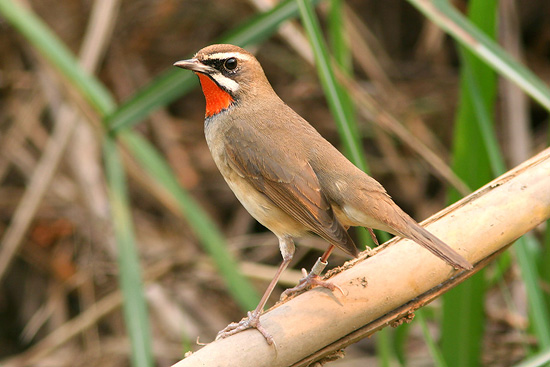
We sat in the blind until 11 then headed out for lunch in Chiang Saen city. After lunch we went to Chiang Saen Lake for a while. I saw 1
Pallas's Grasshopper Warbler(
Locustella certhiola), a
Plain Prinia subspecies
Prinia inornata blanfordi which occurs only in N Thailand, an adult Yellow Bittern(
Ixobrychus sinensis), Little Grebes, Common Moorhens, Purple Swamphens and a
White-browed Crake(
Porzana cinerea). Mr. Boonpob, a birder and ranger at Nong Bong Kai(another name of the Chiang Saen Lake) Wildlife Sanctuary, told us that a male
Chinese Blackbird(
Turdus mandarinus) was still presenting at the other place near the lake, but we chose to go back to Nam Kham since all of us have already seen this rare migrant for several times. According to Rasmussen and Anderton (2005),
T. merula or former Common Blackbird is splitted into four species. The one that winters in Thailand is the
T. mandarinus which mainly breeds in China.
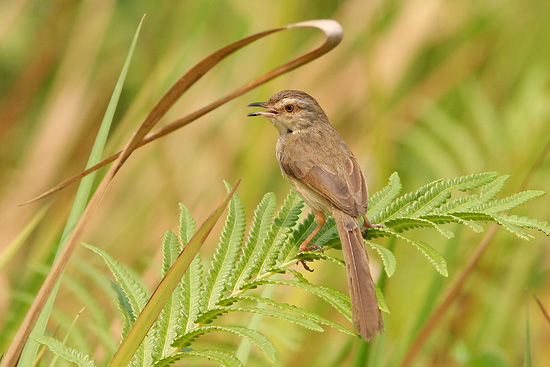
P.i.blanfordi occurs in N Thailand; note buffish plumage especially underparts
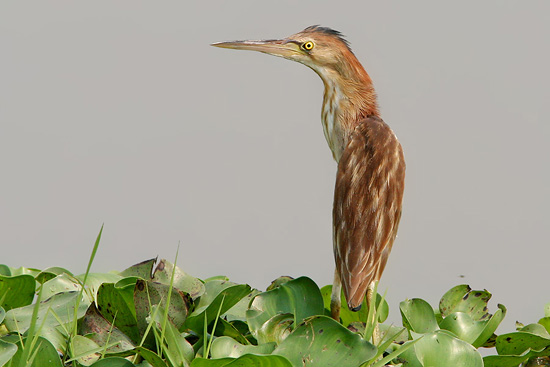
A female
Yellow Bittern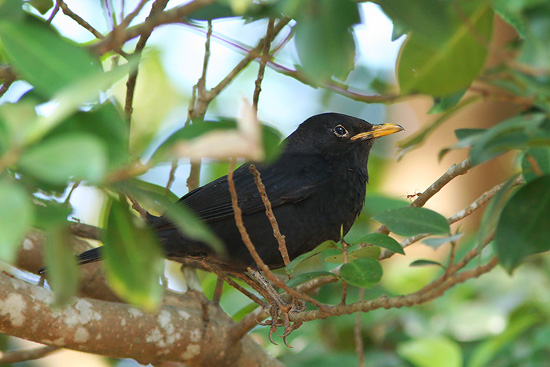 A male Chinese Blackbird at Chiang Saen Lake from Jan 2008
A male Chinese Blackbird at Chiang Saen Lake from Jan 2008
After visitting Chiang Saen Lake, we came back to Nam Kham. Dr. Rungsrit and his team had to go out and search for water resources around Nam Kham in that afternoon, so I had to stay in the blind and wait for them to complete the mission. It was a hot afternoon, and after waiting quietly in the blind for about an hour, a flock of 10+ Red Avadavats(Amandava amandava) came to the pond in front of the blind to bath. Unfortunately, all male birds were already in their non-breeding plumage, which looked more like females except for the tiny white spots on their red rumps. These Red Avadavats are A.a.flavidiventris which mainly occur in Myanmar and northernmost part of Thailand. Male birds have golden-orange belly contrasting with red plumage in breeding season(winter) and brown in non-breeding season. These small munias were so cute and stayed for one or two hours, bathing, preening and sleeping in front of the blind. They really brought joy to the super hot afternoon.
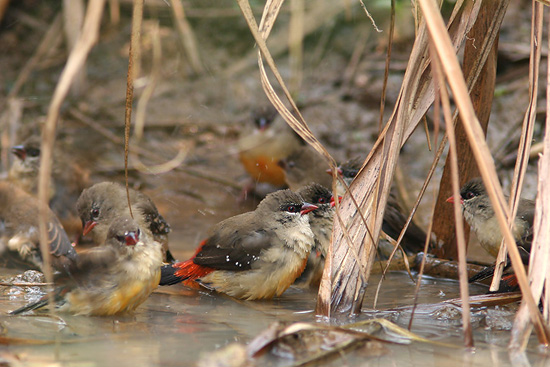
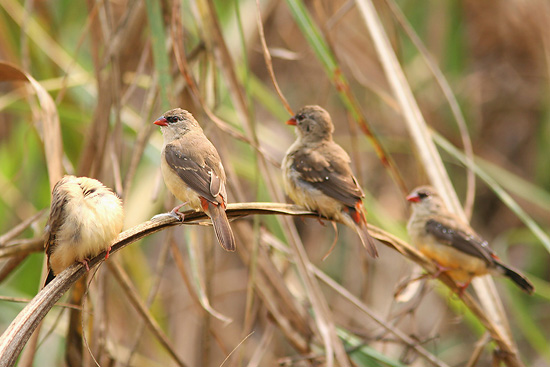
After a while, Dr. Rungsrit came into the blind and joined shooting photos of these little jewels. Avadavats are not common, even though they are usually in large groups. There are only few places where you can see avadavats quite easily in Thailand; for example at Bang Kaew in Bangkok, around Chiang Saen city, Mae Hia in Chiang Mai and several places in the NE. Members of the group that came bathing here were mostly immature birds. Different stages of immature bird were seen together, from the very young ones with black bill, plain body and buff wingbars to some older ones that looked more like females. This is interesting because their breeding period is quite different from other resident birds which usually starts in summer.

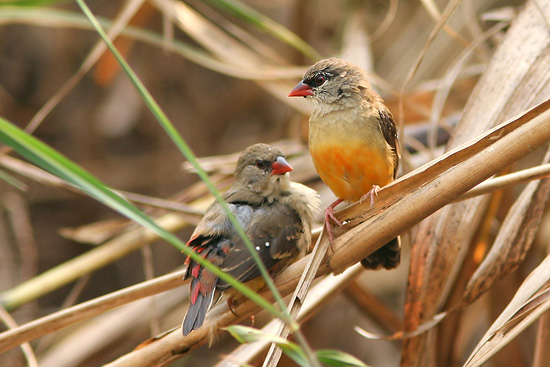
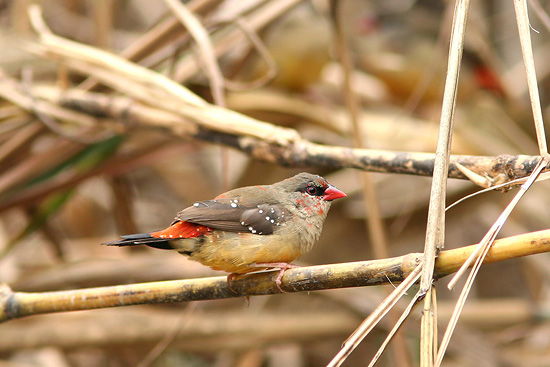
Male A.a.flavidiventris has orange belly with white spots on rump
For that afternoon there were several other visitors that came to the pond. Dusky Warbler(Phylloscopus fuscatus) was the commenest one. At the small blind, hundreds of Scaly-breasted Munia(Lonchura punctulata) and White-rumped Munia(Lonchura striata) had invaded the blind completely. These munias are increasing each year due to the safetiness of Nam Kham area where no one is allowed to catch or trap birds. May be they might cause some problems in the future, which we have to plan carefully. At the bigger blind, I also found a non-breeding Lesser Coucal(Centropus bengalensis) walking acrobaticly on the top of the reedbed, which also gave the same sound as human walking through the reeds. It's quite creepy when you sit in the dark blind and hearing noises of people walking through the grass, but when you take a look outside, there is no one there...
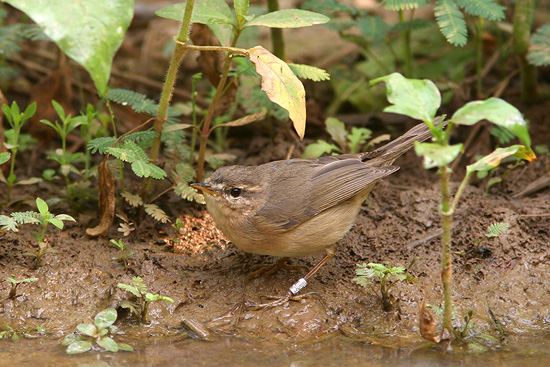

Two individuals of Dusky Warbler in different plumage
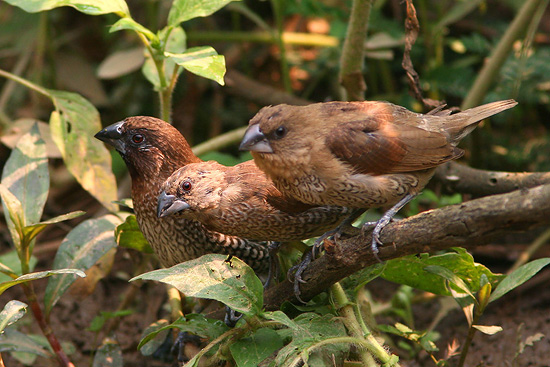
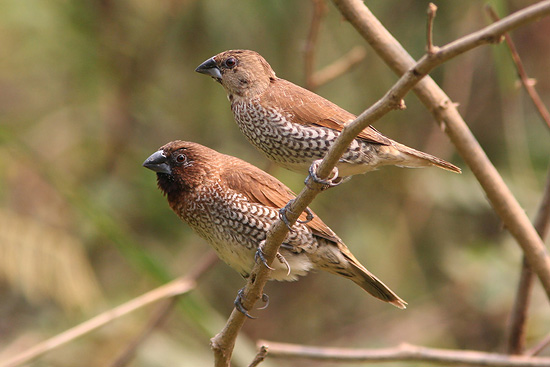
Scaly-breasted Munia increased dramatically
The last visitor which came in the late afternoon was another male Siberian Rubythroat. This "2nd individual" has large black border to his bright ruby red throat showing that he has already consumed a breeding plumage unlike the 1st individual. This male was also banded on his right leg. I had a very good time photographing it, though at first it kept hiding in thickets. I finally got loads of nice picture of it before the sun went down and the sky became darker. I walked out from the blind at around 5pm, but I found nobody at the entrance. I waited until 6pm when all of them arrived. Then we all got back in the car and left Nam Kham. It was a very good time, though only one day, at Nam Kham Nature Reserve. I'm sure that our project is going to be doing well in the future. One day the area will be a nice santuary for birds that are being threatened more and more these days and also a nice place for nature study. It's the first time for me here and it's quite impressive, but I promise to make a second, third, forth, and so on for sure!
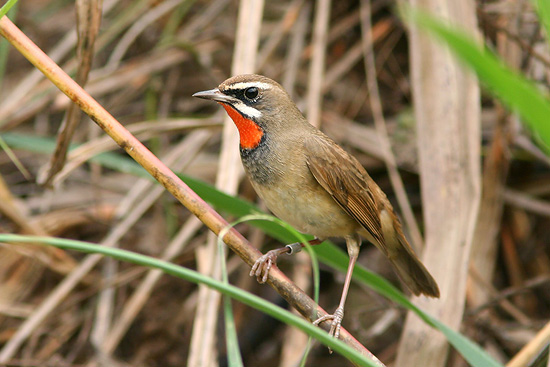
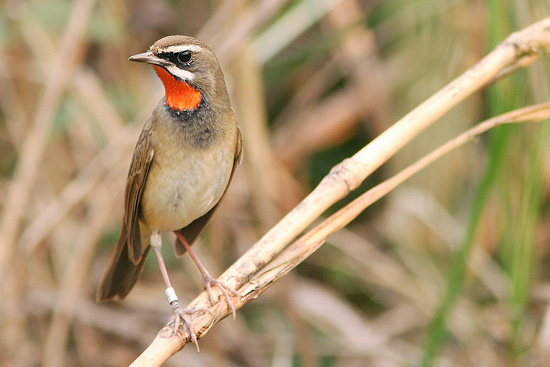
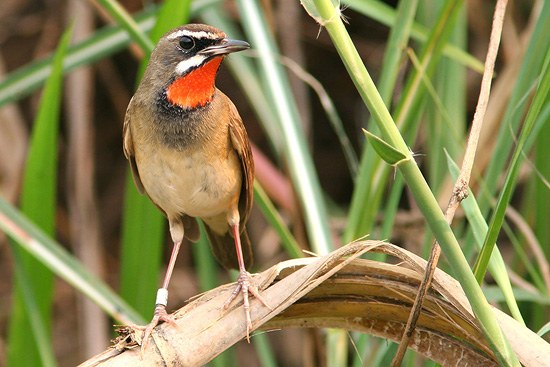
 A nice scenery in the morning after the rain
A nice scenery in the morning after the rain

 White-breasted Waterhen with food for its chicks
White-breasted Waterhen with food for its chicks






















 We sat in the blind until 11 then headed out for lunch in Chiang Saen city. After lunch we went to Chiang Saen Lake for a while. I saw 1 Pallas's Grasshopper Warbler(Locustella certhiola), a Plain Prinia subspecies Prinia inornata blanfordi which occurs only in N Thailand, an adult Yellow Bittern(Ixobrychus sinensis), Little Grebes, Common Moorhens, Purple Swamphens and a White-browed Crake(Porzana cinerea). Mr. Boonpob, a birder and ranger at Nong Bong Kai(another name of the Chiang Saen Lake) Wildlife Sanctuary, told us that a male Chinese Blackbird(Turdus mandarinus) was still presenting at the other place near the lake, but we chose to go back to Nam Kham since all of us have already seen this rare migrant for several times. According to Rasmussen and Anderton (2005), T. merula or former Common Blackbird is splitted into four species. The one that winters in Thailand is the T. mandarinus which mainly breeds in China.
We sat in the blind until 11 then headed out for lunch in Chiang Saen city. After lunch we went to Chiang Saen Lake for a while. I saw 1 Pallas's Grasshopper Warbler(Locustella certhiola), a Plain Prinia subspecies Prinia inornata blanfordi which occurs only in N Thailand, an adult Yellow Bittern(Ixobrychus sinensis), Little Grebes, Common Moorhens, Purple Swamphens and a White-browed Crake(Porzana cinerea). Mr. Boonpob, a birder and ranger at Nong Bong Kai(another name of the Chiang Saen Lake) Wildlife Sanctuary, told us that a male Chinese Blackbird(Turdus mandarinus) was still presenting at the other place near the lake, but we chose to go back to Nam Kham since all of us have already seen this rare migrant for several times. According to Rasmussen and Anderton (2005), T. merula or former Common Blackbird is splitted into four species. The one that winters in Thailand is the T. mandarinus which mainly breeds in China.
 A female Yellow Bittern
A female Yellow Bittern A male Chinese Blackbird at Chiang Saen Lake from Jan 2008
A male Chinese Blackbird at Chiang Saen Lake from Jan 2008

















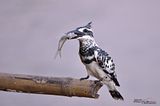


.jpg)
